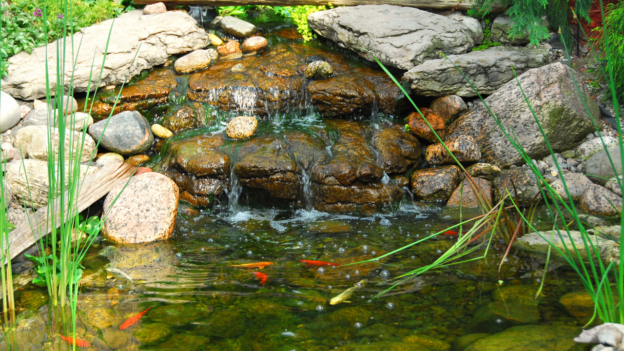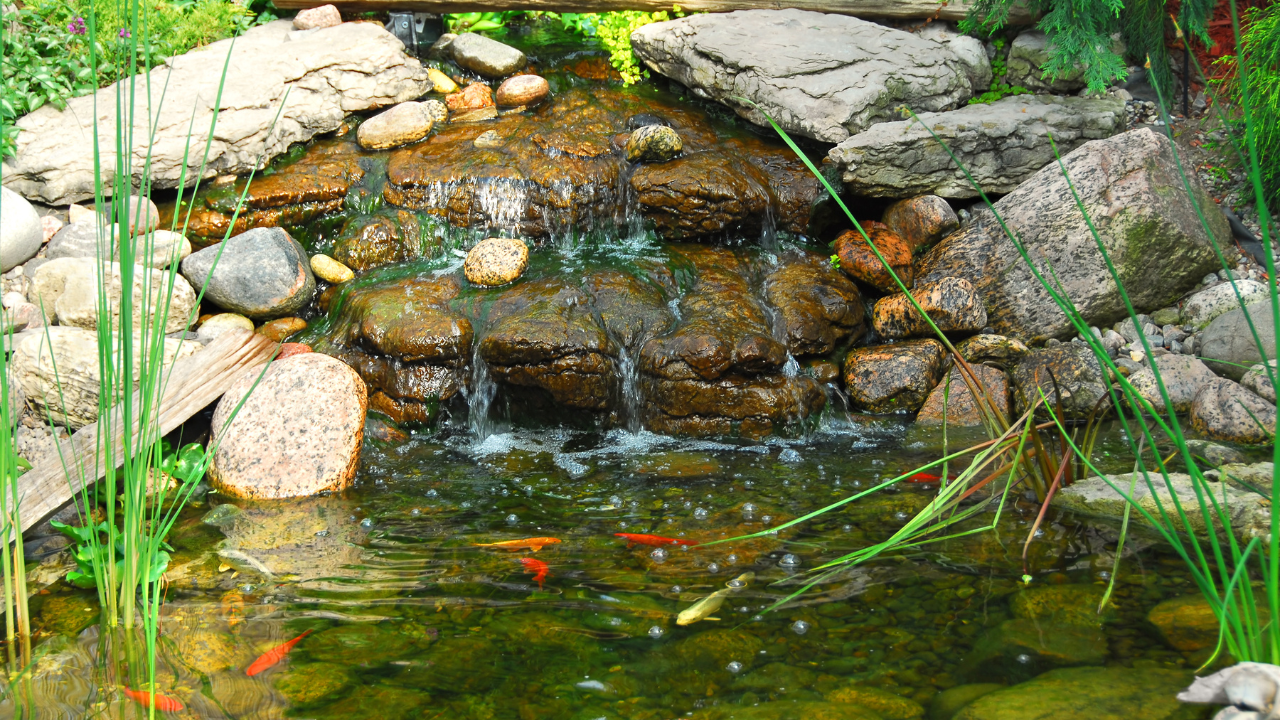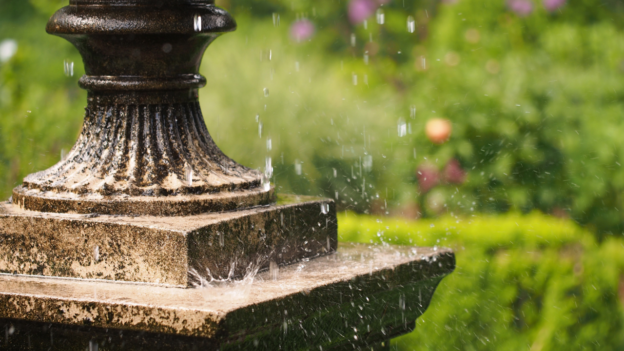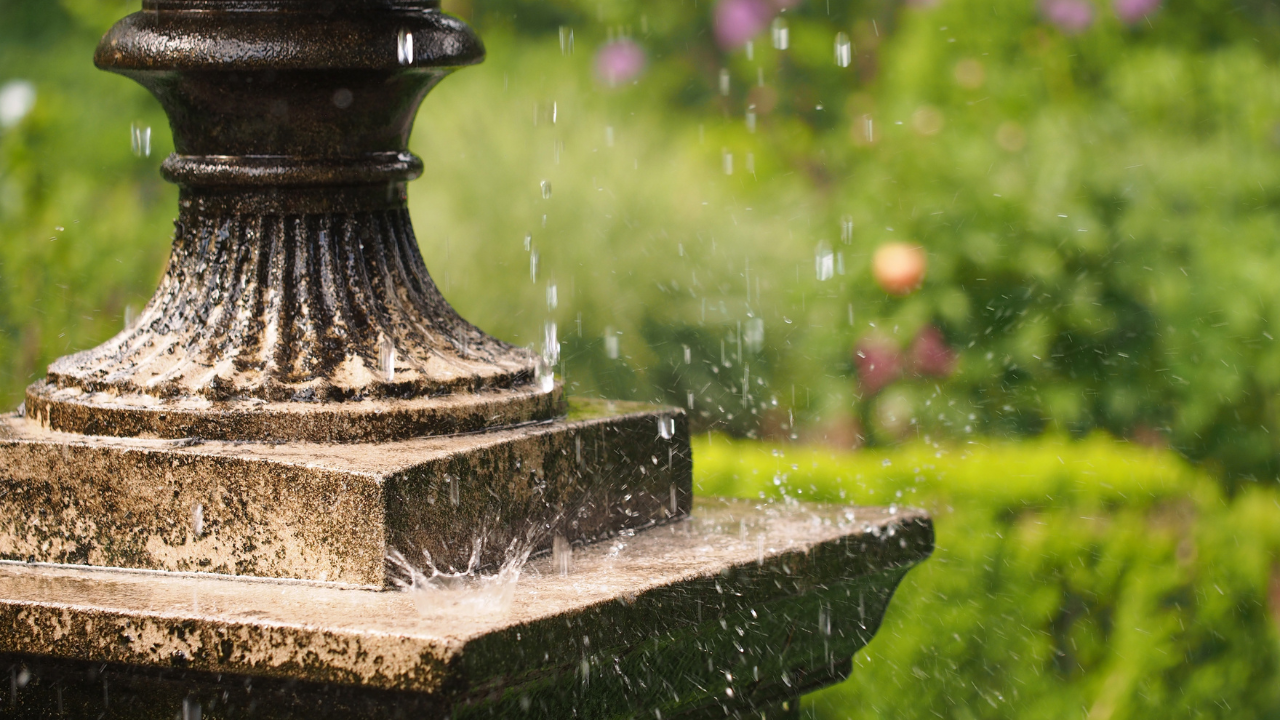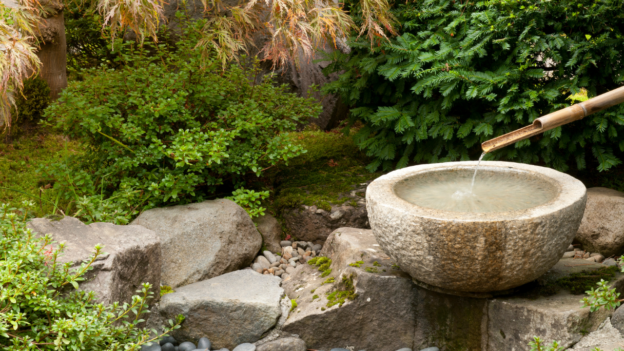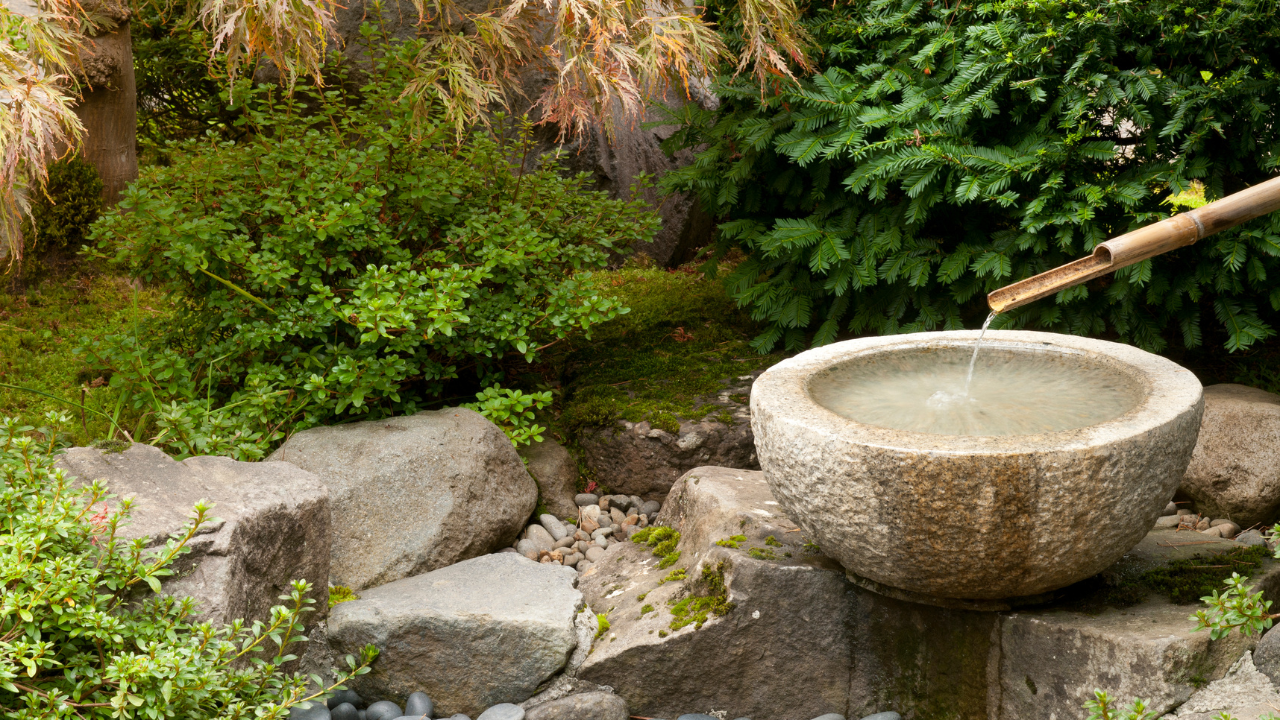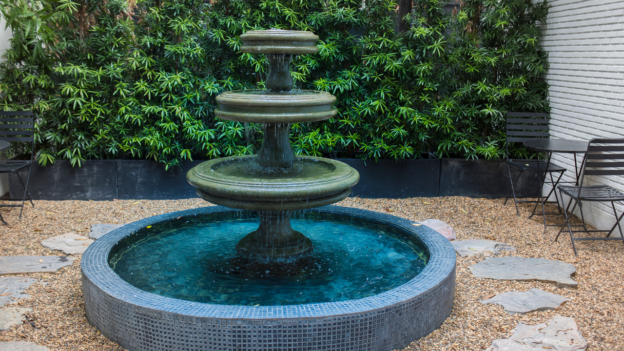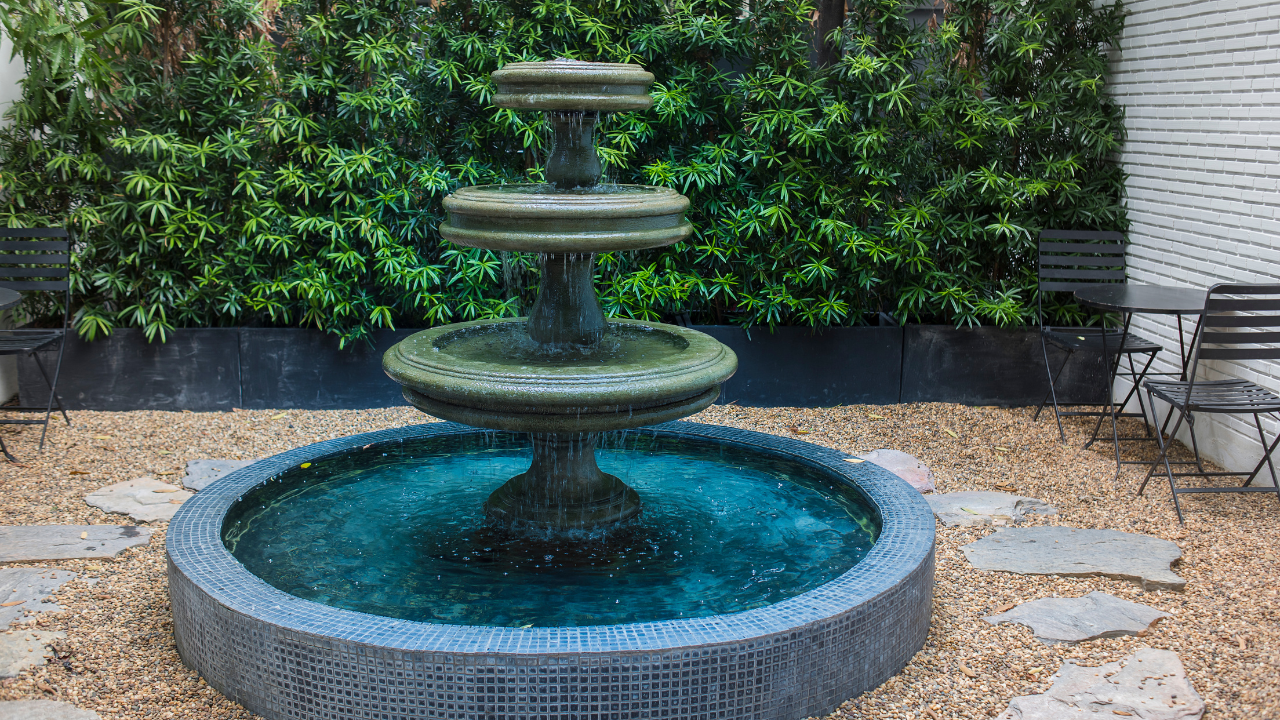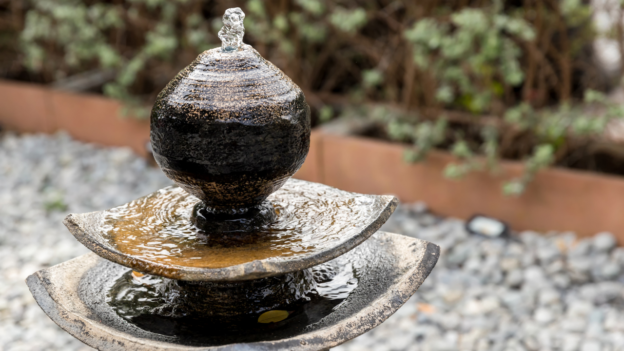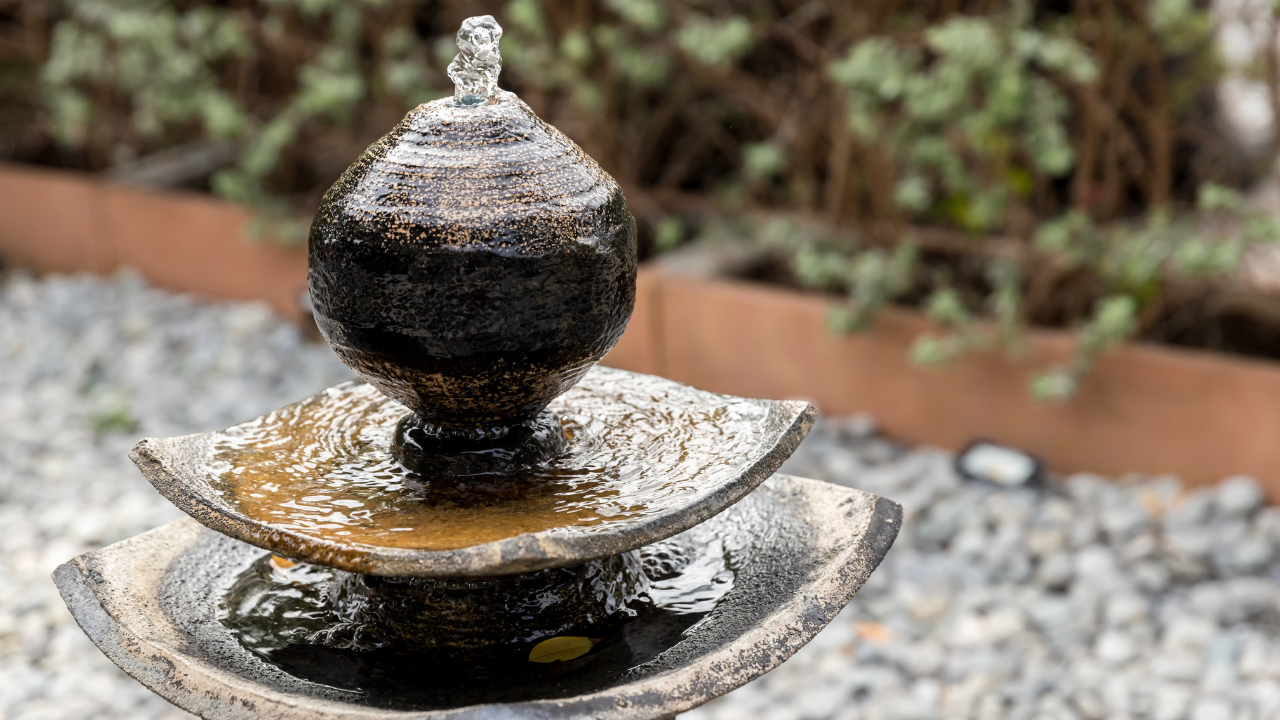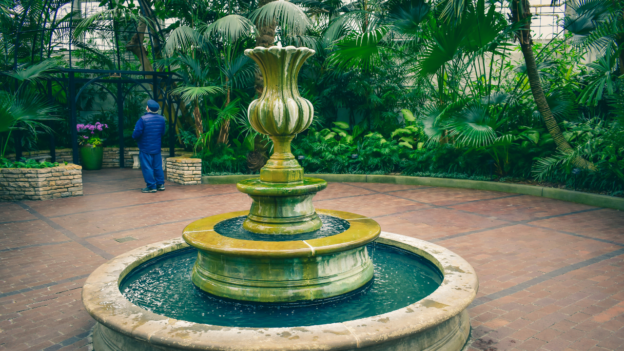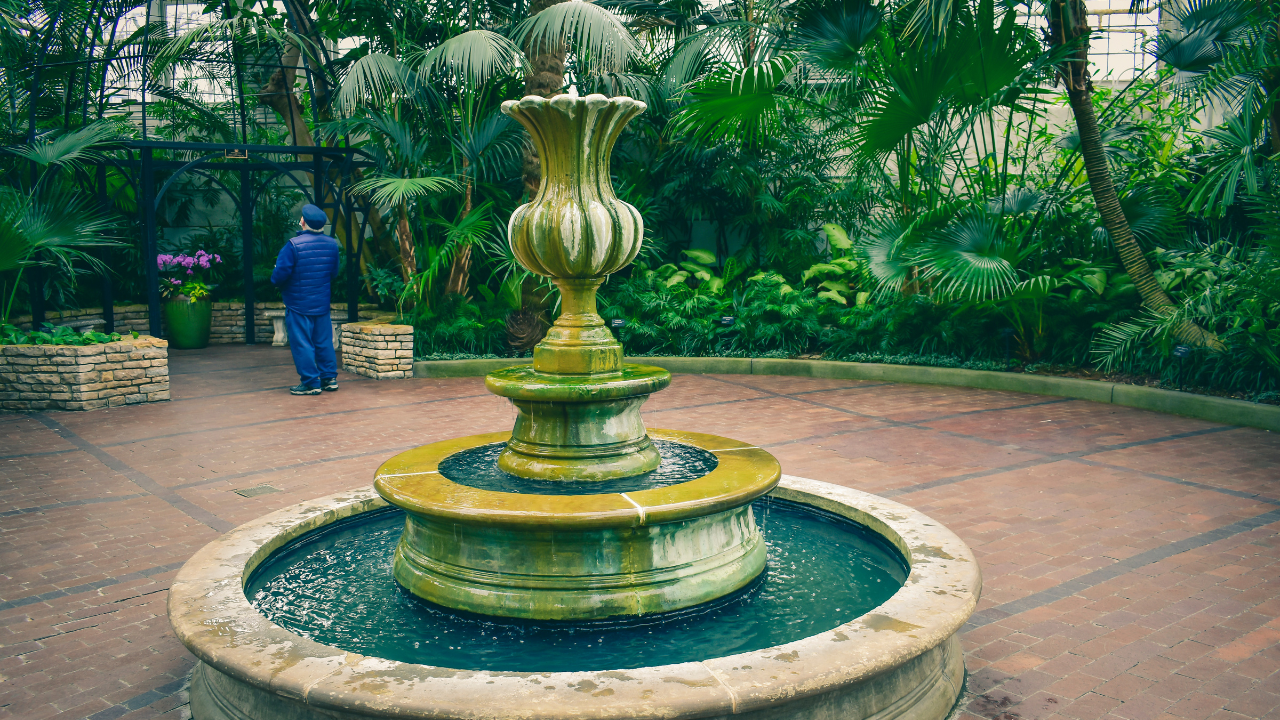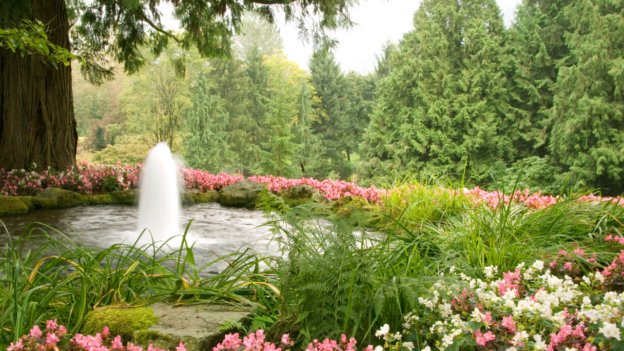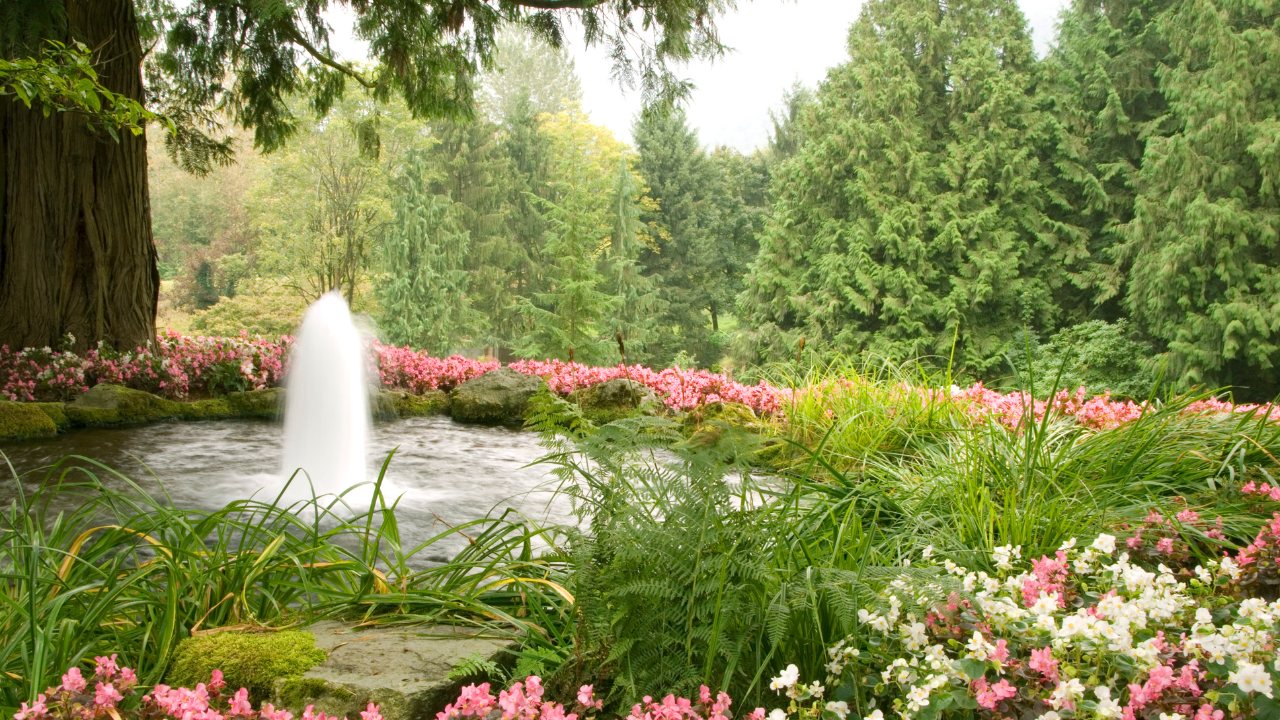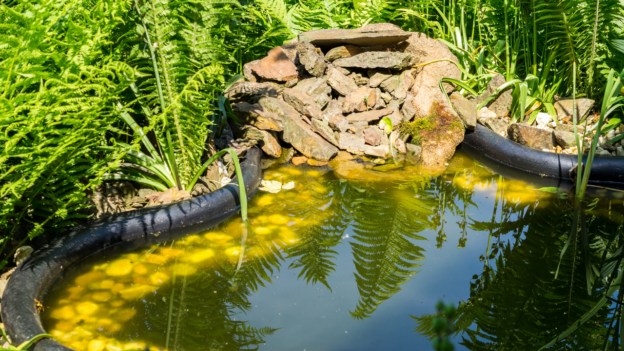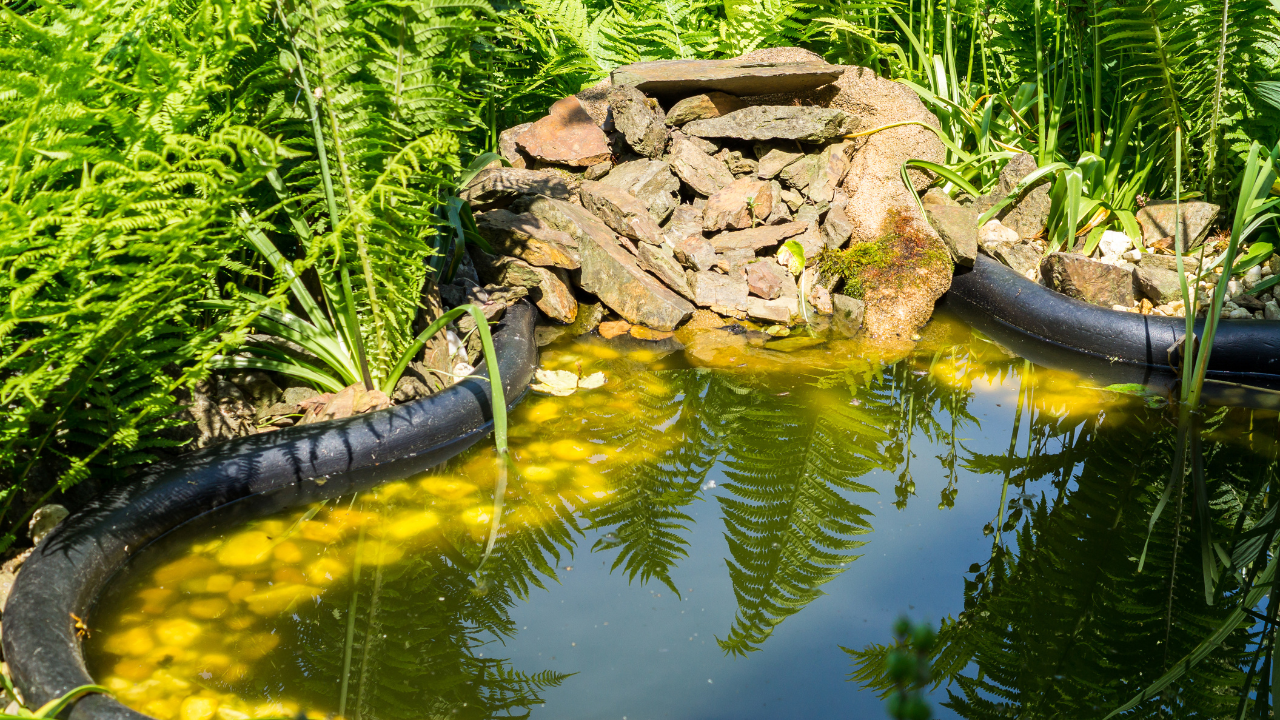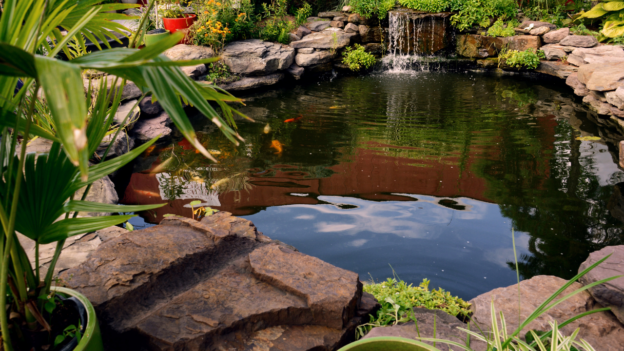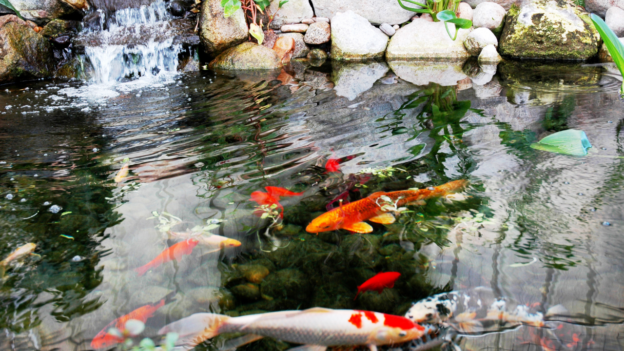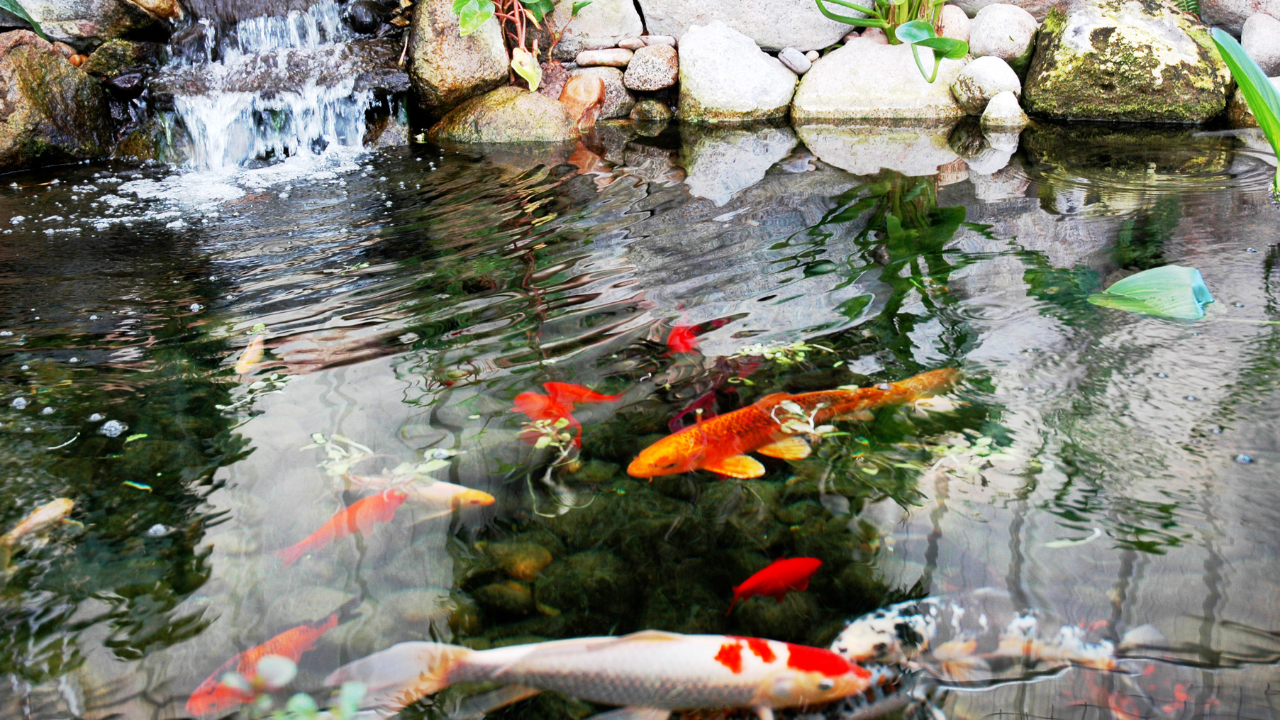Key Takeaways:
- Birds Need Water: Birds use ponds and fountains for drinking, bathing, and cooling off, especially in hot Southern California weather.
- Keep Water Clean: Dirty or murky water scares birds away. Regular maintenance, algae control, and debris removal are essential.
- Add Shallow Areas: Birds prefer shallow water. Use rocks or shelves to create safe, shallow spots in your pond or fountain.
- Moving Water Attracts Birds: The sound and sight of flowing water draw birds in. Add a pump or bubbler if your fountain doesn’t already have one.
- Use Native Plants: Plants like water lilies and other aquatic plants make your water feature more inviting and provide shelter for birds.
- Provide Perches and Shelter: Birds need places to rest and feel safe. Add rocks, logs, or nearby shrubs to your water feature.
- Keep Predators Away: Place your pond or fountain in an open area where birds can spot threats like cats.
- Add a Bird Feeder: Pairing a bird feeder with your water feature increases the chances of attracting birds.
- Avoid Common Mistakes: Don’t ignore maintenance, use harsh chemicals, or make the water too deep.
- Professional Help: Orange County Pond Services can help with pond and fountain repair, maintenance, and custom water feature installation to make your space bird-friendly.
If you’ve got a pond or fountain in your Orange County backyard, you’ve already got a great start to attracting birds. Birds love water—whether it’s for drinking, bathing, or just hanging out. But if you’re not seeing as many feathered visitors as you’d like, don’t worry. With a few simple tweaks, you can turn your water feature into a bird paradise.
Let’s talk about how to make your pond or fountain more bird-friendly. And don’t worry, you don’t need to be a pro or spend a fortune to do it. Pond and fountain repair in Orange County are available around the corner.
Why Birds Love Water Features
Birds need water just as much as we do. They use it to drink, clean their feathers, and cool off, especially during those hot Southern California summers. A pond or fountain can be a lifesaver for them, especially if natural water sources are hard to find in your area.
But not all water features are created equal when it comes to attracting birds. The key is to make your pond fountain parts and supplies in Orange County safe, accessible, and inviting. Here’s how you can do that.
Tips to Attract Birds to Your Pond or Fountain
1. Keep the Water Clean
Birds are picky about where they drink and bathe. Dirty or murky water can scare them away. Regular maintenance is a must. If you’ve got a pond, make sure you’re using the right pond filtration system to keep the water clear. For fountains, check the external pumps and clean out any debris that might clog the system.
- Use algae control products to prevent algae growth.
- Clean out leaves and other debris from water bodies regularly.
- Test the water quality to ensure it’s safe for birds.
2. Create Shallow Areas
Birds prefer shallow water because it’s safer for them to wade in. If your pond or fountain has deep areas, consider adding rocks or shelves to create shallow spots. This is especially important for smaller birds that might be nervous about diving into deep water.
- For ponds, adjust the water depth near the edges.
- For fountains, add a simple bird bath or shallow basin.
3. Add Movement to the Water
Birds are attracted to the sound and sight of moving water. If your fountain already has a steady flow of water, you’re good to go. If not, consider adding a small pump or bubbler to create movement.
- The sound of trickling water can attract birds from a distance.
- Moving water also helps prevent algae growth and keeps the water fresh.
4. Include Native Plants
Birds love natural settings. Adding native plants around your pond or fountain can make it more inviting. Plants like water lilies or other aquatic plants not only look great but also provide shelter for birds.
- Use plants that produce seeds or berries to attract more bird species.
- Plants also help with pond maintenance by reducing algae growth.
5. Provide Perches and Shelter
Birds need a place to rest and feel safe. Add rocks, logs, or even small branches near the water’s edge. This gives them a spot to perch while they drink or bathe.
- If you have a larger pond, consider adding a small island or floating platform.
- For fountains, place nearby shrubs or trees to give birds a quick escape route if they feel threatened.
6. Keep Predators Away
Birds won’t stick around if they feel unsafe. Keep an eye out for cats or other predators that might scare them off.
- Place your pond or fountain in an open area where birds can see approaching threats.
- Avoid overgrown areas where predators might hide.
7. Add a Bird Feeder Nearby
If you really want to attract birds, pair your water feature with a bird feeder. Birds are more likely to visit if they know there’s food and water in the same spot.
- Choose a feeder that attracts the variety of birds you want to see.
- Keep the feeder clean and stocked with fresh seeds.
- Garden fountains in Orange County also attract birds.
Common Mistakes to Avoid
- Ignoring Maintenance: Birds won’t visit a dirty or poorly maintained water feature. Regular maintenance is key to keeping your pond or fountain bird-friendly.
- Using Harsh Chemicals: Avoid chemicals that could harm birds or other wildlife. Stick to natural solutions for algae control and pond cleaning.
- Making the Water Too Deep: Birds prefer shallow water for drinking and bathing. If your pond or fountain is too deep, add rocks or shelves to create safer areas.
How Orange County Pond Services Can Help
If you’re serious about attracting birds to your pond or fountain, it’s worth making sure your water feature is in top shape. That’s where Orange County Pond Services comes in. We specialize in pond and fountain repair, fountain maintenance, and water feature installation in Orange County.
- Pond and Fountain Repair: If your water feature isn’t working like it should, we can fix it. From submersible pumps to pond liners, we’ve got you covered.
- Fountain Maintenance: Regular upkeep is essential for keeping your fountain clean and functional. We offer fountain services to help you maintain the perfect flow of water.
- Custom Water Features: Want to create a bird-friendly water feature from scratch? We can design and install custom water features tailored to your outdoor space.
Whether you’ve got a small backyard pond or a large commercial water feature, we’ve got the tools and expertise to make it bird-friendly. Plus, we use eco-friendly practices to ensure your water feature is safe for birds and other wildlife.
Ready to Bring the Birds to Your Backyard?
Attracting birds to your pond or fountain doesn’t have to be complicated. With a little effort, you can create a space that birds will love to visit. Keep the water clean, add some shallow areas, and include plants and perches to make it feel like home.
If you need help with pond repairs, fountain maintenance, or water feature installation, don’t hesitate to reach out to Orange County Pond Services. We’re here to help you create the perfect outdoor space for both you and the birds.
So, what are you waiting for? Start making your pond or fountain a bird paradise today!
